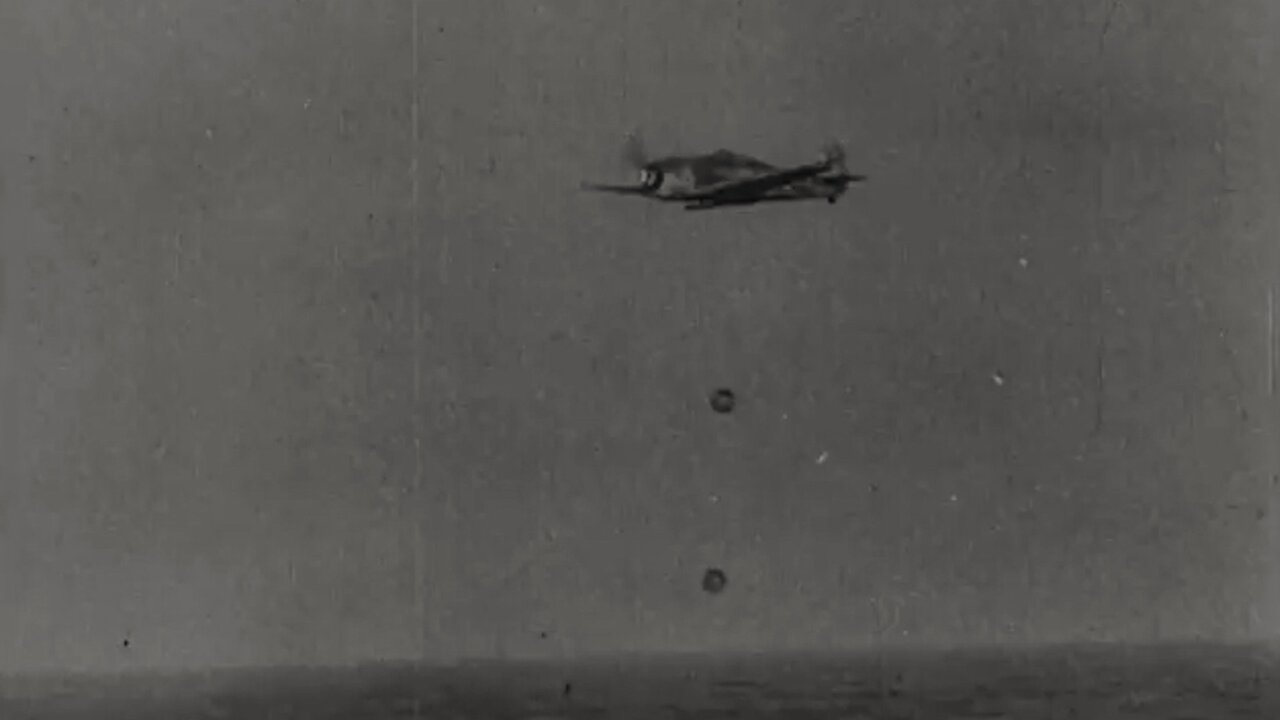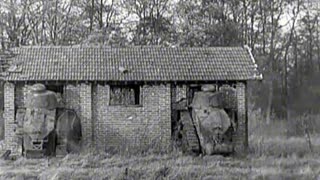Premium Only Content

Luftwaffe experiments with "bouncing bombs" dropped from a Focke-Wulf Fw 190
After the Royal Air Force Operation Chastise, the attack on German dams carried out on the night of 16/17 May 1943 by 617 Squadron using "Upkeep" bouncing bombs, an intact bomb was captured in the wreckage of a Lancaster bomber commanded by Flt Lt Barlow which had struck high tension cables at Haldern, near Rees in Germany and crashed.
The bomb had not been released and the aircraft had crashed on land, so none of the detonation devices had been set off. Heinz Schweizer, a renowned bomb disposal officer in the Luftwaffe's Sprengkommando unit, was tasked with safely recovering and examining the ordnance. Subsequently, a 385-kilogram (849 lb) version of Upkeep, code-named "Kurt" or "Emil", was built at the Luftwaffe's Erprobungsstelle, or "test site", on Germany's Baltic coast at Travemünde, one in a network of four such establishments in Nazi Germany. The importance of back-spin was not understood and trials by a Focke-Wulf Fw 190 proved to be dangerous to the aircraft, because the bomb matched the speed at which it was dropped. Attempts to rectify that with booster rockets failed and the project was cancelled in 1944.
-
 2:23
2:23
hw97karbine
1 month agoRenault FT tanks on demolition duty
73 -
 UPCOMING
UPCOMING
Glenn Greenwald
1 hour agoThe Fraudulent GOP War Against Tucker and Nick Fuentes; Dick Cheney: Hero of the Resistance; Lindsey Graham's Deranged RJC Comments | SYSTEM UPDATE #544
364 -
 48:42
48:42
Donald Trump Jr.
2 hours agoCommunism vs Common Sense, What's Next for NYC? | TRIGGERED Ep.289
27.8K104 -
 LIVE
LIVE
BonginoReport
2 hours agoWill The LA Dodgers Dodge WH Visit?! - Nightly Scroll w/ Hayley Caronia (Ep.172) - 11/06/2025
2,415 watching -
 LIVE
LIVE
The Charlie Kirk Show
1 hour agoTHOUGHTCRIME Ep. 104 — Post-Election Palette Cleanser + Tucker/Fuentes Interview Reaction
2,666 watching -
 LIVE
LIVE
Tundra Tactical
3 hours agoDadlefield Game Night BF6 New Update Weapon Grind
52 watching -
 15:39
15:39
Megyn Kelly
3 hours agoTucker Carlson on Why He Interviewed Nick Fuentes and What He Wanted to Convey To Him
23.9K35 -
 1:14:10
1:14:10
Kim Iversen
2 hours agoZionists PANIC Over Muslim Mayor In NYC
57.9K71 -
 1:50:40
1:50:40
Redacted News
3 hours agoBREAKING! Trump Makes HUGE Announcement Trying To Save MAGA, Cost of Living & Israel CRUSHED GOP
91.8K151 -
 LIVE
LIVE
Dr Disrespect
8 hours ago🔴LIVE - DR DISRESPECT - ARC RAIDERS - QUEST MASTER
1,459 watching